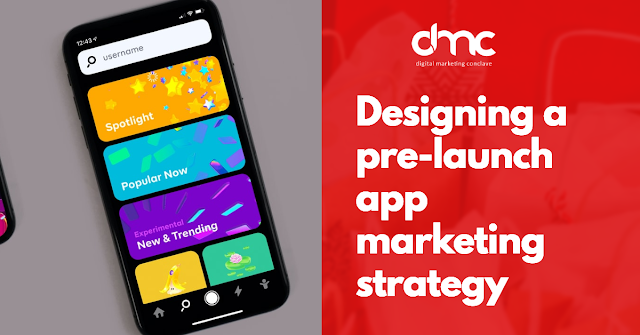Designing a pre-launch app marketing strategy
So, you are nearly done with the development work on your app (is that ever possible?) - but yes, nearly done. You are gearing up for promoting your app. And between that and when the installations commence, you will spend countless nights on a caffeine driven binge, testing, waiting, testing and waiting again.
For your app to have the magical install numbers.
But wait, before you hit the promotions phase with a bang, there is a phase in between which you absolutely cannot skip. Actually, this should get done at the pre-development phase itself. At this time, you should refine what you put together then. But in case you haven't, let's revisit the pre-app launch activities that you must absolutely do.
1. Goals: Your app’s ikigai
Let’s begin with your app’s ikigai. So you developed an app - great. But why should anyone care about your app?
- What does your app do?
- How big of a problem does it solve? For how many people and at what scale?
- What does your app do that none of the other apps are doing at present?
- How beneficial to the user is this differentiation?
- Does the user value the differentiation?
- Will the user be ready to pay a premium (storage space on phone) for this app?
Don’t try to sell the features of the app - sell the value that the app will deliver - more time [for loved ones], more space [for yourself], more productivity, better quality of life.
Pro tip: Profits lie where the problem is unique enough, for a significant audience size, solvable at scale. Even though profitability lies in the niche, try securing niches profitable enough for you to sustain.
2. Market research
You might have conducted market research in the pre-development phase. Now is the time to do some market research again - or reaffirm your previous findings.
- Who is your customer?
- What are their unique pain points?
- How does your app solve their pain points?
- Does your app solve the problem completely or partially?
- Who are your main competitors?
- What will be the monetization strategies for your app?
- Have you charted out your beta testing strategy?
Pro Tip: Use this time to understand your customer extremely well, what are their pain points, what channels, mediums they draw their information from. The monetization strategies, though important, can evolve. Focus on user acquisition first.
3. Creating user personas
A user persona is a portrayal of your ideal customer. Though the persona can be fictitious, the situation and outcomes are real. A user persona is framed from real customer discovery and investigating and understanding the needs, goals, and behavioral patterns of a target audience.
An app can have more than one user persona and it is important for marketers to develop and provide as much insight into each of the personas to ensure that the messaging and communication is aligned.
User personas also address the central goals of the user and the challenges they currently face, thereby giving everyone an overview of how the app fits into the life of the persona.
Questions to address at this stage are:
- What are the demographic and psychographic variables of the user persona.
- What types of content does this audience engage with online?
- What tone, voice and content style resonates well with this persona?
- Are there any engagement cues that surface amongst this audience’s online activity [for example, does this persona type engage heavily with video? Does this persona type like discounts?
- Do these users follow any reputable influencers in this product’s vertical on social media?
- Are these users known to pay for apps or make in-app purchases?
Pro Tip: Do not rush this stage. The more detail and depth that you deliver at this stage, the better it will be during the marketing communication stage.
4. Value proposition
On the basis of internal brainstorming and the outcomes of the market research, define your app’s unique value proposition. Your unique value proposition will lie at the intersection of what your customers care about, what is your area of expertise and what your competition does really well. Your unique value proposition will answer the what's, why's and the how's of the experience.
- What are the distinct features, advantages and benefits of your app?
- What are the unique competitive advantages that your app has over others?
- What is your user acquisition strategy?
Pro Tip: Your value proposition is your calling card. Its not your strapline, not your brand tagline. It should clearly communicate why the user absolutely needs your app.
5. Marketing Communications Mix
Develop your marketing & promotional strategy during this time. Use the inputs generated in the market research and persona development to craft user acquisition strategies.
- What channels will you use for user acquisition?
- What metrics will you use to define which channels are successful?
- What channels will you use to advertise your app?
- Set up your app marketing materials: blog, landing page, website, graphics, social media handles, developing press kits and so on.
- Identify influencers that you’d like to work on and keep working on their agreements in parallel.
Pro Tip: Any marketing activity that needs a lot of time, ideally you should start it now - like content development, community building, scouting for influencers. It would be helpful to build a pool of potential audience gradually through various channels to whom you could reach out to at various stages: beta testing, launch, referrals.
6. Workflows and processes
The pre-launch phase is a good time to sort out the workflows and processes. Once the app is launched, you shouldn't be scurrying to establish processes, post launch, your focus should be on customer experience and user acquisition not the operational blueprint.
- Chart out the user acquisition strategy: how many teams would be working on user acquisition?
- Chart out end to end user acquisition scenarios [from ads, influencer marketing etc]; attribution models [how would attribution get distributed along omnichannel campaigns]
- Chart out your crisis management plan - what if the app acquisition strategies run into rough weather.
Pro Tip: The lifeblood of any app is its user acquisition. If you have a stream of loyal, engaged users, your app will market itself.
7. Milestones and targets
You need to keep an internal milestone calendar - this will enable you to check your progress and recalibrate accordingly.
- User growth / app installs (Months 1- 12, Year 2, Year 3 and so on)
- App engagement growth (same timeline)
- What metrics you will use to measure success? Customer acquisition costs? Customer Lifetime Value?
Pro Tip: Though it is helpful to have the milestones in place but if don't have them, don't worry. App marketing is pretty much building your parachute on the way down from the plane. Marketplace dynamics evolve everyday and you need to pivot accordingly.
8. Workforce planning and development
Till now you may have been functioning on a skeletal staff - but come launch, and you will need to have functional experts across various areas. You will need to plan your workforce requirements and may need to answer questions like
- What additional staffing requirements do you anticipate over the next 6-8 months?
- Do you have a recruitment strategy in place?
- Do you have your Employer Value Proposition ready (EVP)?
Pro Tip: If you cannot hire full time staff, consider hiring contractual staff or consultants for some of the functional areas which you consider are not core to your business.
9. Market size
Whether it is pre-launch or post-launch, this is one of the most important sections that you need to revisit from time to time.
- What is the total available market (TAM) for your app?
- What percentage of the TAM are you planning to tap? Chart this out in the projections section (listed above)
- Have you estimated the Serviceable Available Market (SAM) = segment of the TAM that you can reach through your sales channel.
- How do you plan to increase your footprint amongst the SAM?
- App uptake is heavily dependent on early adopters. Do you have an idea about your Serviceable Obtainable Market (SOM) = segment of the SAM that is most likely to be comprised of the first people to use your product (the early adopters).
- How are you planning to reach the early adopters?
Pro Tip: Revisit this from time to time. Be obsessive about user growth and acquisition.
10. Costs
During all this you need to keep an eye out for, and at the same time, develop projections for costs. There are two types:
Fixed Costs: Costs that you will have to incur irrespective of the stage of your business.
Variable Costs: Costs that will vary as per your production scaling up - that is, staff costs.
You need to incorporate these costs in your projections as well, keep aside funds for contingencies, and track your monthly costs against the anticipated outlay.
Pro Tip: Operate frugally as much as you can. You can save the fancy stuff for the launch but in the pre-launch phase, you should identify what areas are desirable and what are essential. In times of any crisis, you should have a ready to go list of what items can be deprioritized.
11. Revenue Models
At this stage, you also need to craft your monetization strategies.
Free app - this is when you don’t want to monetize your app.
Free + advertising –In case you want the app to be available to the users for free but need advertising to subsidize the users experience. You might want to offer in-app purchases that remove the ads.
Free (“lite version”) + paid version – This can be a great model if you have a strong value proposition that can be showcased in a free version of your app.
Free + in-app purchases – To get users in first, you need to have a fantastic product. The user experience that they have governs how satisfied they are with your app and whether they are willing to purchase specific products / services for a fee.
One time, up-front fee – Simple to execute and understand for the users. In this scenario, you only attract paid users.
Up-front fee + in-app purchases – This is probably the hardest sell because you are asking people to pay twice. It only works in certain niches.
Subscription – Users pay a subscription fee to access the product for a fixed period of time.
You also need to prepare at-least 3 scenarios of projected profit and loss statements [best case, realistic and worse case scenarios].
Pro Tip: Which revenue model is best for your app? That really depends on the type of app you have, your long term goals, your vision of the user experience that you want to offer to your customers.
So, I hope this post has been useful and you will find many pointers for the pre-launch phase. Let me know if I have missed anything in the comments section below.





Comments
Post a Comment